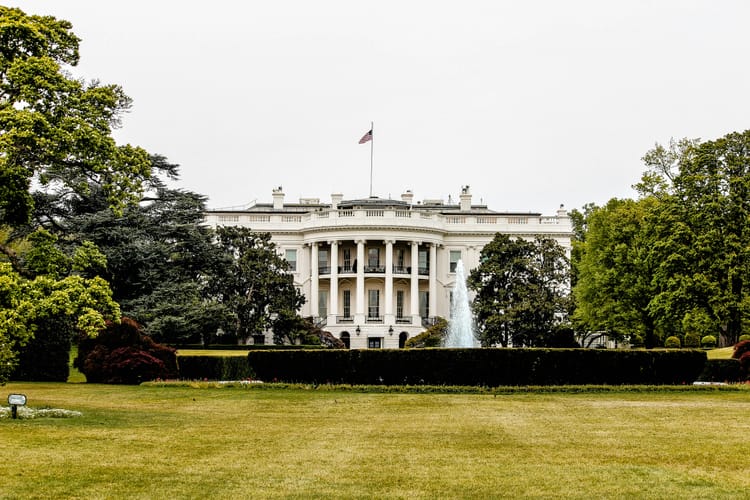Between greenwashing and greenhushing: what is the right way to communicate sustainability plans?

Fear of being accused of greenwashing is leading some companies to refrain from talking about their sustainability strategies. What is greenhushing, and is it possible to communicate about sustainability in a safe way while driving commercial value?
We’re all familiar with the term greenwashing, but since it was coined in the 1980s a flurry of other “shades of green” have popped up to qualify companies’ sustainability marketing.
Now, Chief Marketing Officers (CMOs) trying to talk to customers about the environmental or social benefits of their products, or about their brand’s sustainability initiatives, must navigate between a whole host of potential accusations.
These include but are not limited to: greenlighting (emphasising a small sustainable part of the brand while ignoring a majority of more problematic impacts); greenshifting (shifting the blame and responsibility to act on customers) and greenwishing (expressing a desire to be more sustainable without presenting any concrete plans).
The result of this proverbial minefield is that a lot of companies are now practising greenhushing. What is greenhushing? Underreporting or hiding sustainability efforts from the public. This trend is even reaching the world of influencers, 84% of which say they are reluctant to talk about sustainability in their content for fear of a backlash.
In 2022, carbon market consultancy South Pole surveyed 1,200 large companies with net zero targets across 12 different countries, and found that although most of them have set science-based targets, one in four have no plans to talk about them publicly.
“If a quarter [of businesses] today aren't coming forward with details on what makes their target credible, could corporate green-hushing be spreading? The speed at which we are overshooting our planetary boundaries is mindblowing. More than ever we need the companies making progress on sustainability to inspire their peers to make a start. This is impossible if progress is happening in silence,” said South Pole CEO Renat Heuberger.
The caution is in part driven by regulatory scrutiny, as recent laws created to combat greenwashing are already leading to litigation against companies suspected of practising it. In the UK, the Competition and Markets Authority (CMA) and the Advertising Standards Authority (ASA) are working together to protect consumers and encourage companies to abide by the Green Claims Code.
To date, the ASA has taken action against at least 20 brands, including airlines, banks and fashion retailers. For instance, it banned a Shell advert focused on its low-carbon energy products, arguing that it gave the overall impression that low-carbon products comprised a significant portion of Shell’s portfolio, which is not the case. In other words, Shell was found guilty of greenlighting.
In the EU, the proposed Green Claims Directive set to come into force from 2026 sets out norms for how companies substantiate, communicate and verify their environmental claims to consumers. The current draft proposes significant penalties for non-compliance, including fines of up to 4% of turnover, a confiscation of breach-related profits and a 12-month ban from public procurement processes.
“The Directive matters because greenwashing is abhorrent and not okay. My worry is that it will greenhush even more because companies are too scared of saying anything. Any of these regulations make people panic, as it’s yet another set of legislation they might be at odds with,” said Maddy Cooper, Founder and CEO of Flourish, an agency for brands looking to generate and communicate sustainable change.
What is greenhushing, and what does it cost
As much as it may protect firms from greenwashing claims, greenhushing itself is not without risks. Beyond the fact that it is a step back in the transparency needed to promote climate action across the corporate spectrum, it also threatens business growth in a traditional sense.
In the inaugural Sustainability Gap Index published in 2023, consultancy Brand Finance quantified the financial value of sustainability perceptions by assessing how much of a driver sustainability is for purchasing a wide range of products.
It then compared 4,000 companies’ sustainability performance to their consumers’ perceptions of sustainability to calculate the potential lost opportunity when sustainability initiatives are not clearly communicated to customers. It found that companies with good sustainability ratings are losing millions, sometimes billions of dollars in brand value because their customers do not perceive them to be as sustainable as they are.
“Large companies are all spending a vast amount on sustainability transformation, but if they don’t get it out into the storytelling, they won’t realise the commercial benefits of it. Commercially it’s a lose-lose,” Cooper told CSO Futures.
So how can companies communicate their sustainability goals and successes in a way that drives engagement and ensures they are protected against greenwashing? Well, it starts with telling the truth and not trying to divert attention away from problematic areas. “You need to have the humility to say ‘we’re not perfect in all these areas but we have a plan’,” said Cooper. The biggest mistakes to avoid are overclaiming and being too generic, she added.
One of the tools that can help CMOs refine their strategy to communicate their brand’s sustainability is the Sustainable Marketing Compass. This open source framework aims to support companies in “embedding sustainability at the heart of marketing”. Concretely, it focuses on aligning marketing with the UN Sustainable Development Goals (SDGs), noting that it may involve redefining what makes the success of a marketing campaign.
“Historically, marketing is seen as the ‘engine of growth’, where the sole measure of success is based on revenue/profit generated with a lack of care for environmental and societal aspects. Redefined marketing becomes an orchestrator of controlled performance across the pillars of sustainability, based on the organisation's articulated purpose (based on UN SDGs) and adopted success model,” states the framework’s website.
The compass then emphasises performance, purpose, participation and partnerships as four “activation pillars”, and reinforces the importance of data to support sustainability claims.
Authentic action is easiest to communicate
But in the end, nothing is as effective in conveying the power of sustainability action as making that action core to business strategy, and few brands show that better than Unilever.
Former CEO Paul Polman started talking about the business case for sustainability back in 2010, when he kicked off the brand’s Sustainable Living Plan. The company was behind one of the first surveys quantifying the value of sustainability perceptions in 2017, and Polman went as far as calling the company “the world’s biggest NGO”. Unilever’s push to make sustainability a business priority and the centre of its communication strategy paid off: by 2018, Unilever’s 28 sustainable brands represented 70% of the company’s turnover.
“If a brand really understands its authentic ESG story and its real transformation plan and speaks only about the reality of what they’re doing, if communication is fully data-led and substantiated and straight-forward with consumers and presents an authentic action in line with UN goals, then they should be in line with the directive,” explained Cooper.
Beyond anti-greenwashing regulations, voluntary initiatives could also support companies’ sustainable communication. In 2022, public relations professionals issued an open call for the creation of a 13th SDG around responsible communication to encourage open, fact-based and respectful communication between all stakeholders.
Meanwhile Marketing Declares aims to act as a sustainability standard for marketers, with the purpose of “using the influence, energy and tools of [the] industry to reimagine, rebuild and heal our planet”.







Member discussion